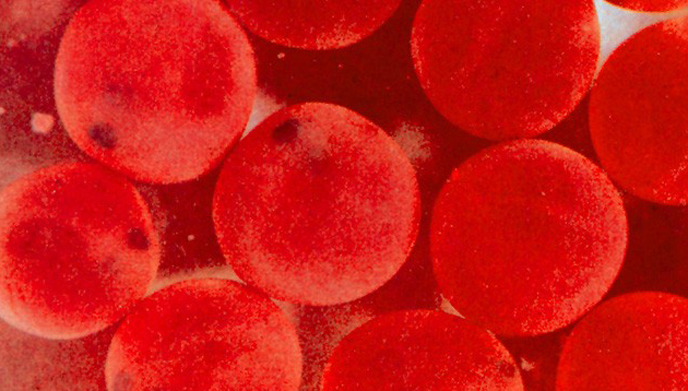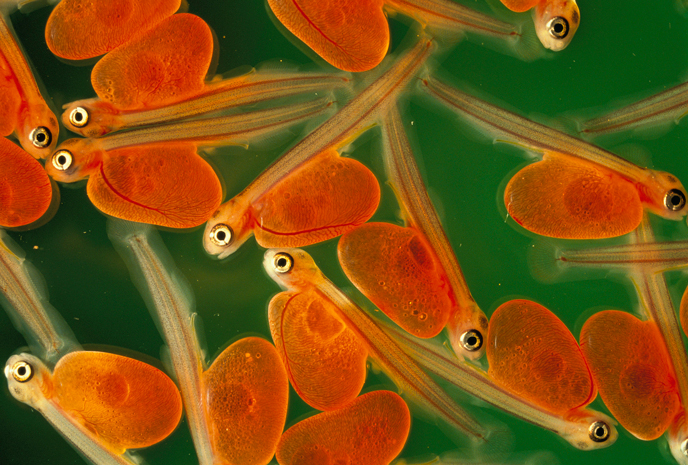
As Lake Brooks and Naknek Lake freeze over during the Alaska's long, cold winter the Brooks River continues to flow. Its currents carrying wind-swept white spruce trees and icy sludge downriver.
However, beneath the truculent waters, Brooks River is alive with life. Small, translucent, and orange-red salmon eggs jiggle within the protection of pebbles and sediments along the river's bottom. In Katmai after being spawning in late summer and fall, newborn sockeye salmon will emerge from their fragile eggs in about four months' time, usually in January or February.

The dark spots in these salmon eggs are the eyes of the larval fish contained inside.
At this stage they enter a second phase of life where they are known as alevin. This is a time of vulnerability when, although exterior to the egg, each newborn salmon remains attached to their yolks. The yolk remains the life source of edible sustenance in order to survive Mother Nature's severe welcome to this world.
Although typically obscured within their pebble fortresses, alevin face the natural dangers of being on the bottom of the food chain. Rainbow trout and arctic char gluttonously devour eggs and alevin by the hundreds if not thousands. Red-breasted mergansers and common goldeneyes keep them surveying the waters above.

Alevins are larval salmon. They have hatched from their eggs, but they cannot swim freely and are extremely vulnerable.
If not eaten, suffocation may occur if an alevin's gravelly home does not receive enough flowing water, obstructing oxygen from cycling into openings in the ground and streaming through each developing gill.
A sockeye salmon's life begins fragile, challenging, and dangerous. This is only the beginning of such magnificent creatures. It is merely one season. They have so much against them. Yet, the instinct and urge to grow, survive, and, ultimately, reproduce, is ingrained within their sockeye salmon genes – an impulse which will keep thousands upon thousands of them alive each year, returning only to die where each was born.
